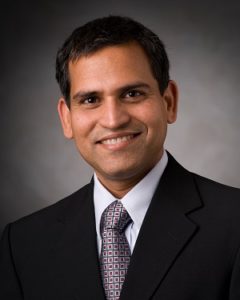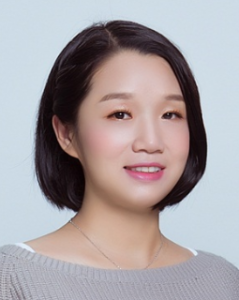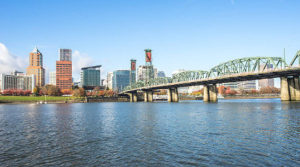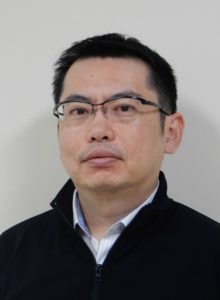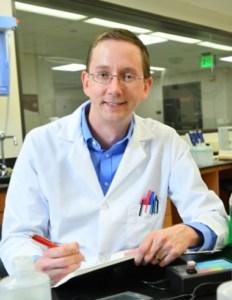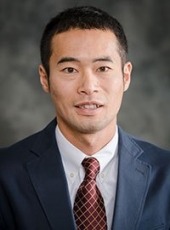 We are delighted to introduce our latest Emerging Investigator, Daisuke Minakata!
We are delighted to introduce our latest Emerging Investigator, Daisuke Minakata!
Dr. Daisuke Minakata earned his Ph.D. in environmental engineering from Georgia Tech in 2010. He worked as a research engineer at the Brook Byers Institute for Sustainable System at Georgia Tech for 3 and half years. Then he became an Assistant Professor at the Department of Civil and Environmental Engineering at Michigan Technological University in 2013. Dr. Minakata’s research interests include development of computational tools to predict the fate of various organic compounds in water and wastewater treatment technologies, including advanced oxidation and reverse osmosis membrane processes and engineered systems including in water distribution systems. Dr. Minakata also studies the nexus of food-energy-water to understand the interventions of sustainable technologies at household levels.
Read his Emerging Investigator article: “Ultraviolet and free chlorine aqueous-phase advanced oxidation process: kinetic simulations and experimental validation‘ and find out more about him in the interview below:
Your recent Emerging Investigator Series paper focuses on ultraviolet and free chlorine aqueous-phase advanced oxidation process. How has your research evolved from your first article to this most recent article?
Predicting the fate of an organic compound and the degradation products in the aqueous-phase advanced oxidation process requires three components: (1) reaction pathways; (2) reaction rate constants; and (3) solving the ordinary differential equations of all species involved in the degradation. We previously developed linear free energy relationships to predict the chlorine radical reaction rate constants for various organic compounds. This study identified elementary reaction pathways of acetone degradation in UV/free chlorine advanced oxidation process using the quantum mechanical calculations and predicted the fate of the degradation products using the previously developed linear free energy relationships. Our predicted fate was compared to the experiments we conducted and we validated our elementary reaction-based kinetic model.
What aspect of your work are you most excited about at the moment?
Couple ab initio and density functional theory quantum mechanical calculations with experimental measurements to predict the mechanistic fate of an organic compound and the degradation products in the aqueous phase advanced oxidation processes. With this approach, we can provide mechanistic insight into the degradation mechanisms and a comprehensive picture of radical-induced fate of organic compounds in complex aqueous phase advanced oxidation processes.
In your opinion, why is it important to understand the reaction mechanisms behind advanced oxidation processes and how does the model you have developed aid our understanding?
Understanding the elementary reaction mechanisms provides the most fundamental reaction pathways and kinetics and this information can be applied for many other products. It is not practical to study the degradation products of hundreds of organic compounds experimentally but understanding the most fundamental elementary reaction pathways and kinetics advances our ability to predict the fate of organic compounds in more comprehensive manners.
What do you find most challenging about your research?
We have demonstrated our capability of predicting the fundamental elementary reaction pathways and kinetics for structurally simple organic compounds using ab initio and density functional theory quantum mechanical approaches. However, challenges remain in applying this approach for structurally more complex organic compounds because of numerous possible reaction pathways and difficulties in validating the predicted pathways and kinetics with the experiments. Also, predicting the fate of structurally diverse organic compounds requires a high throughput screening tool that will be developed based on the fundamental knowledge about the reaction pathways and kinetics discovered by both experiments and computational calculations. Combining the knowledge about the fate of organic compounds with toxicity to develop a comprehensive tool to predict the toxicity of degradation products is the ultimate challenge in this field.
In which upcoming conferences or events may our readers meet you?
ACS National Meeting in Boston, Division of Environmental Chemistry, Advanced Oxidation Process (AOP) session in August, 2018. I co-organize an AOP session with colleagues every year.
How do you spend your spare time?
I walk with our dog in nature.
Which profession would you choose if you were not a scientist?
I would run a bookstore/coffee shop, collecting a lot of history books and providing good quality of coffee.
Can you share one piece of career-related advice or wisdom with other early career scientists?
Keep your mainstream research with you and focus on longer-term research goals.











